This site uses cookies. View our Cookie Policy to learn more about how and why.
This site uses cookies. View our Cookie Policy to learn more about how and why.
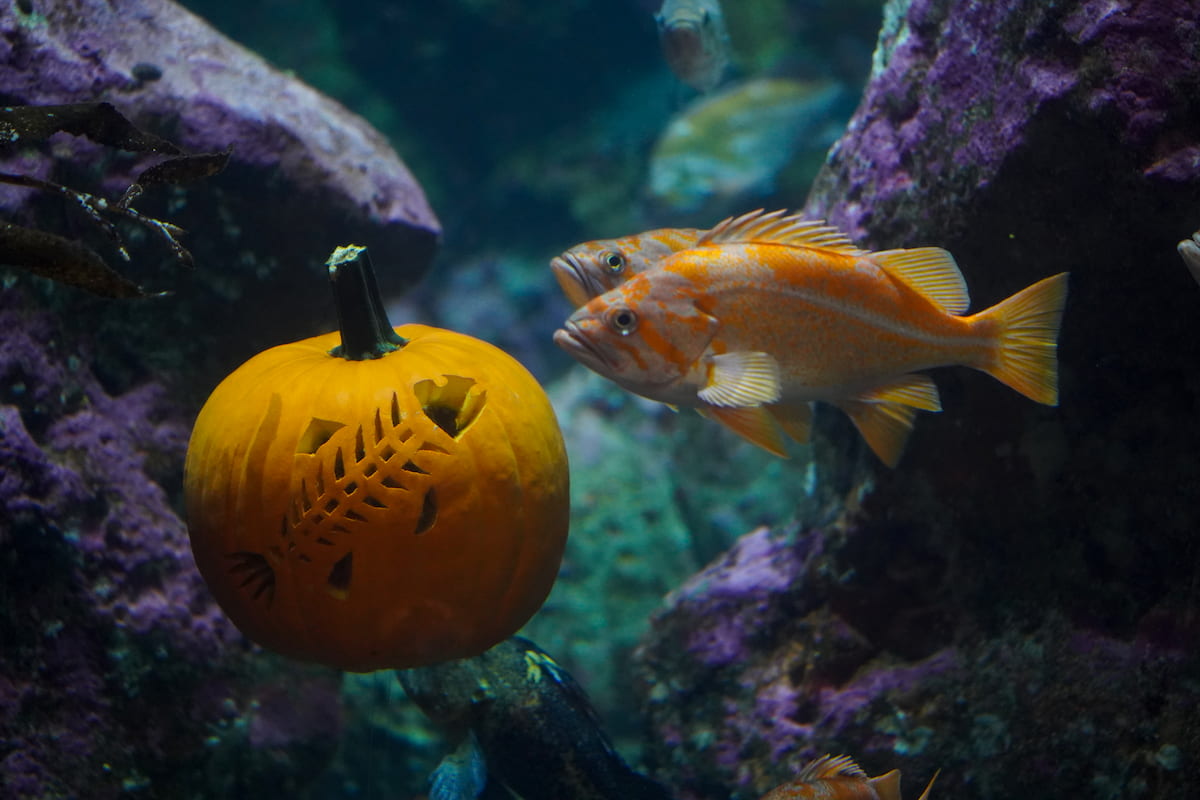
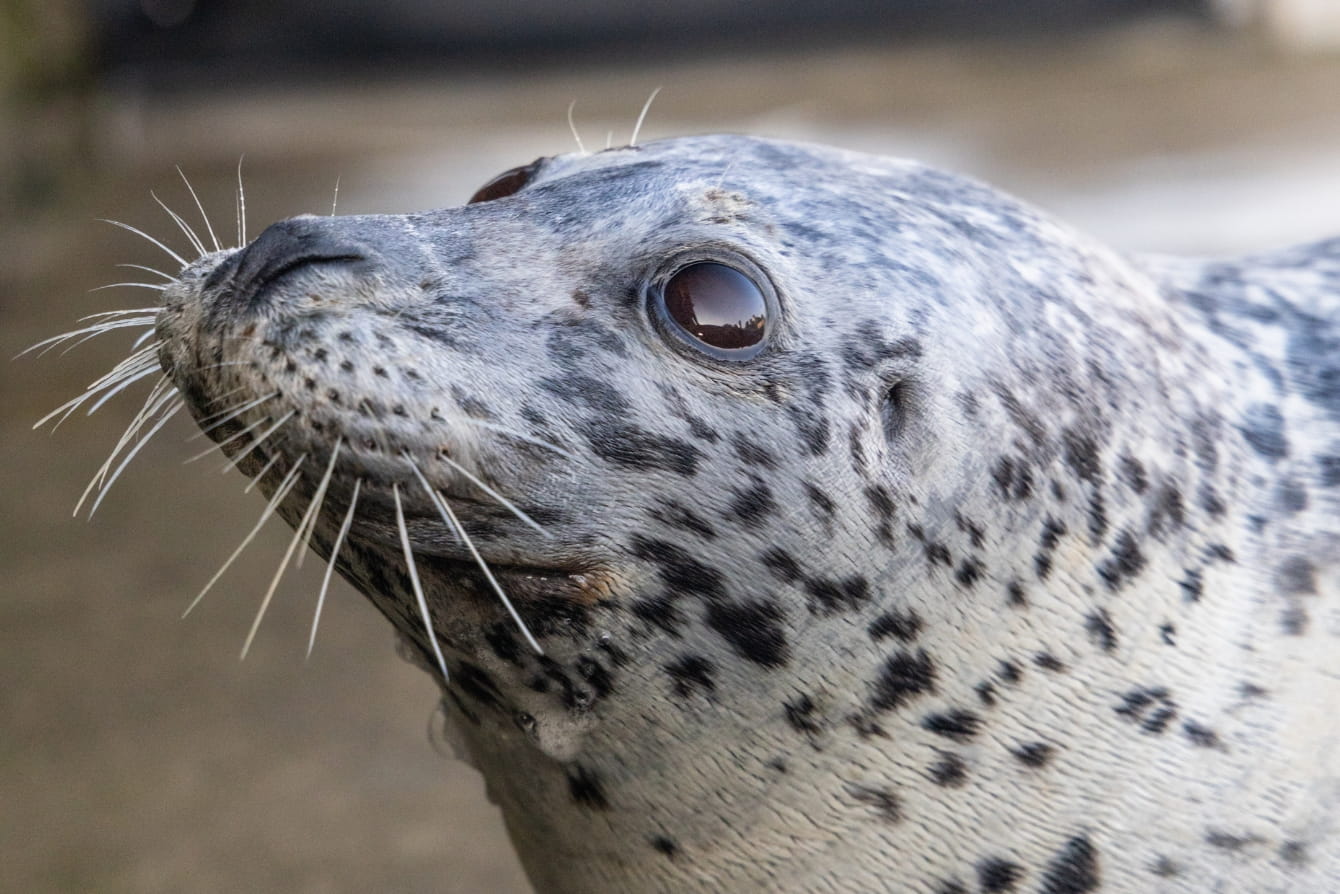
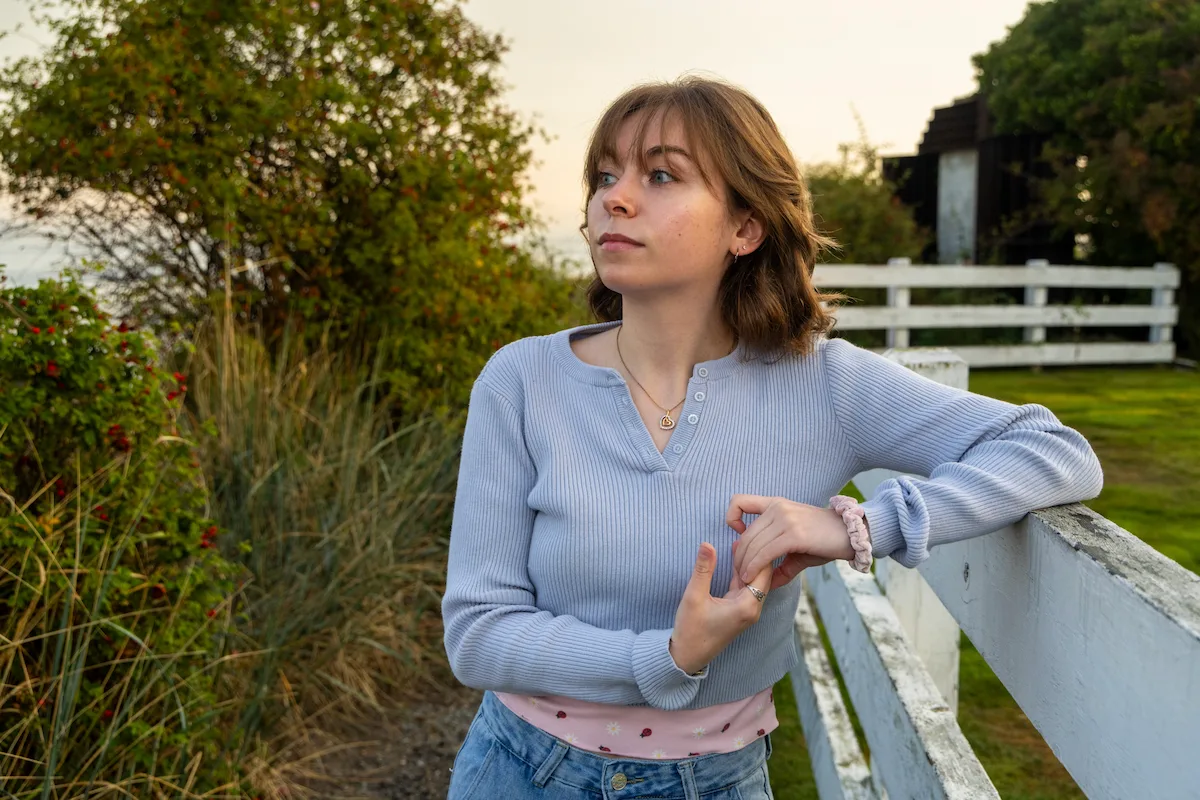
The Seattle Aquarium is incredibly fortunate to have an amazing team of talented, passionate volunteers who generously give their time in support of our conservation mission. They share their knowledge and enthusiasm with our guests, help prepare meals of sustainable seafood for the animals in our care, dive in our habitats, meet members of the public on local shorelines and so much more. As it turns out, some of them also show their love for the marine environment with fin-tastic tattoos!
So we’re adding to our ongoing series of web stories about folks at the Aquarium with marine-themed tattoos (check out part 1, part 2 and part 3 if you haven’t already) with this special installment, devoted to volunteers.
We hope you enjoy learning about these three outstanding volunteers and the stories behind their ink. Please be on the lookout for another installment devoted to volunteers later this fall!
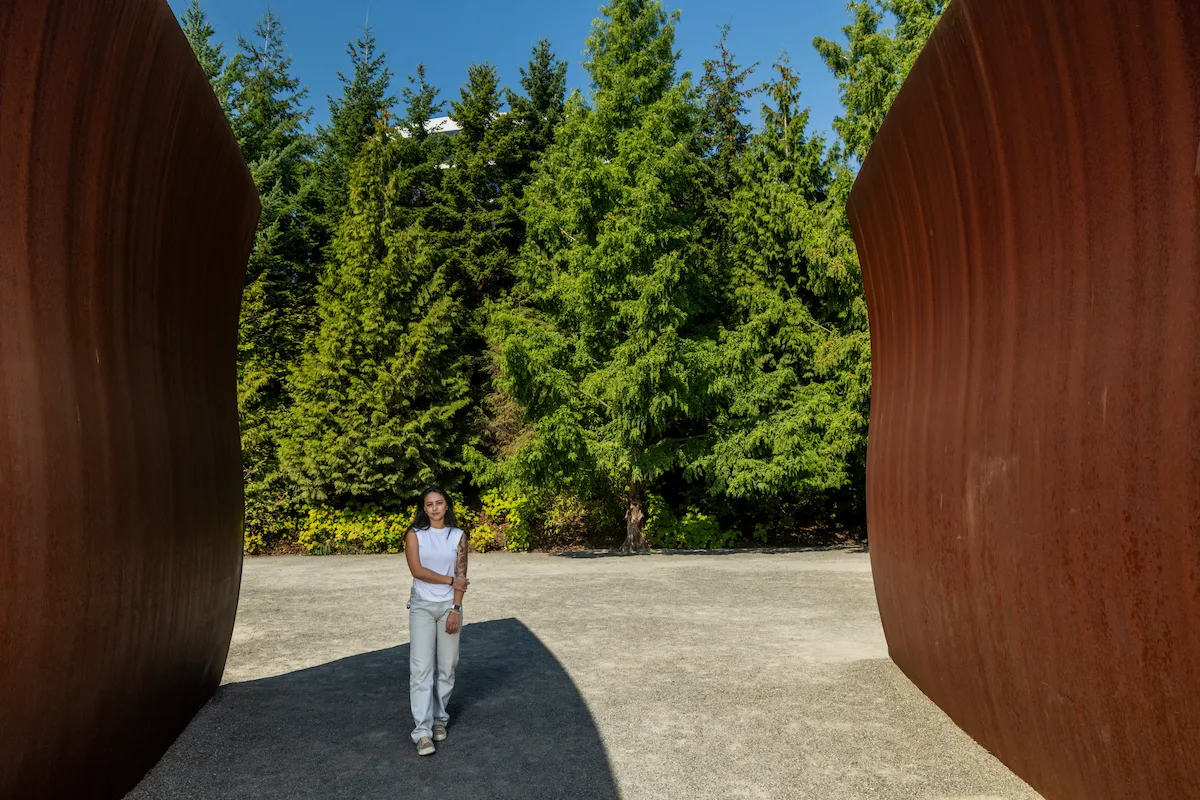
“I love that I can bridge the gap and help people get comfortable interacting with the animals in the touch pools. I always tell them that this is something that they’ll probably never get to do again unless they’re at a tide pool or another aquarium.”
—Mia Redfern (she/her)
My mom is Japanese, and my dad’s American, from Washington state. He’s in the military and they met in Misawa, Japan. My mom gave me my middle name, Umi, which means ‘ocean’ in Japanese. Growing up, we traveled around the world, and I’m always drawn to a body of water, no matter where I go.
When I started college, I majored in art. But as I was taking classes, I realized that I wanted to use it more as an outlet to express myself—not something I wanted to get evaluated in.
And I thought, ‘What’s something impactful that I’m also really passionate about?’ I landed on marine biology and, through my studies, realized that it would be really cool to have tattoos that remind me of why I wanted to get that degree.

I’m living with my dad here in Seattle right now, saving to move to France and get my master’s. I came to the Aquarium as a kid, and when I went back as an adult, I thought it would be a cool place to volunteer—and wouldn’t make me feel like my degree was going to waste. I love the atmosphere and the people, just giving back to the community.
I believe that’s important because I grew up in a lifestyle where everyone accepted everyone. I traveled a lot as a military kid, getting to see so many different cultures and religions, and, through that, I realized that community is a really great way of making everyone feel welcomed.
I love people’s stories, and my tattoos have connected me a lot to other people. Sometimes they know facts about the animals, and other times, I tell them something that’s new to them. It’s great to connect with people like that.
—Mia Redfern (she/her)
Tattoo by @scorpionandroses
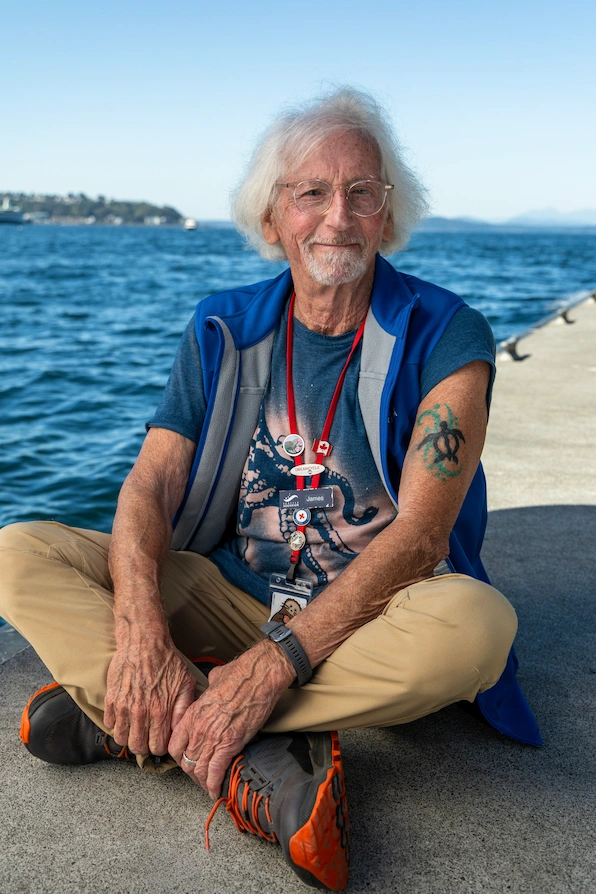
“I wish I’d found this place years ago. On a scale of 1 to 10, it’s a 400. Every time I come here for a shift, I spend the whole time smiling. It's just so fun.”
—James Smith (he/him)
I started swimming when I was 4—I love being in the water. ‘Swim or die’ is my mantra, and I believe it’s a big part of why I’ve gotten to be this old and still have so much freedom of movement.
But, you know, I’ve learned more in the month that I’ve been volunteering at the Aquarium than the entire time I’ve spent in the water. Watching children—budding marine scientists—and people who have never experienced the ocean getting to touch these creatures, learn about them… it’s going to change how they see the ocean. My wife said, ‘You’ve found your home.’
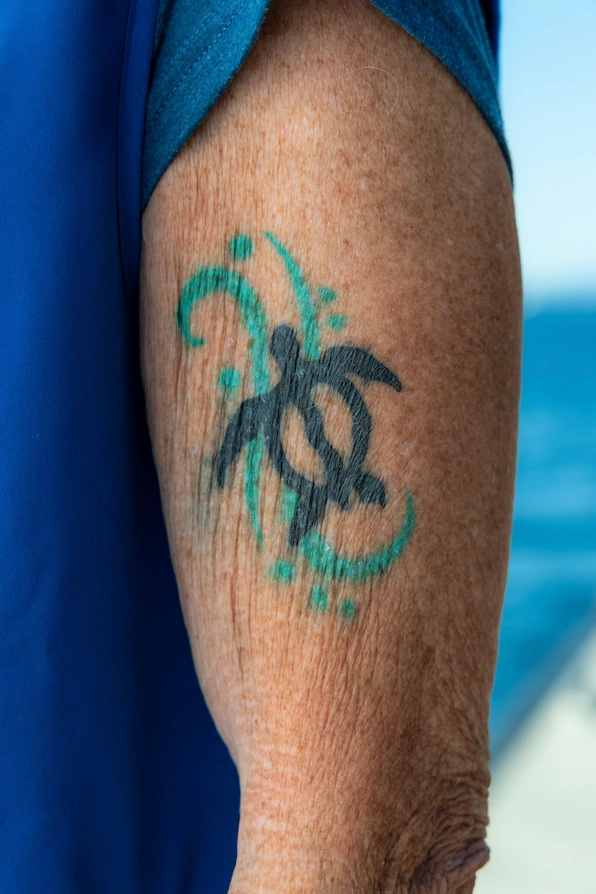
A few years ago, I was swimming across a crescent-shaped bay on the Big Island, a place I swim often. There was an onshore wind, so strong that sand was blowing across the ocean’s surface. I couldn’t look toward shore because I’d get a face full of it. When I lifted my arm, I’d get blown over sideways. The bottom was churned up so I couldn’t tell how deep the water was, and I couldn’t really see where I was because of the waves.
I got partly across the bay but couldn’t see my regular landmarks to know how much farther I had to go. And, suddenly, a great big honu—that’s Hawaiian for sea turtle—rose up out of the gloom below. It turned to look at me and made a sharp right.
I followed, and it led me all the way back into shore. When I could see better, I realized I’d gotten blown out of the mouth of the bay and into the open ocean. If I hadn’t seen the honu, I would have just kept swimming.
That’s why I got this tattoo, a honu petroglyph—an early present for my 80th birthday.
—James Smith (he/him)
Tattoo by @southseastattoohilo

“I’ve always loved animals—I came to the Aquarium all the time as a kid. Now, I call my mom after almost every volunteer shift to tell her what happened. I always have interesting stories to share!”
—Molly Biedscheid (she/her)
I grew up in Mukilteo, hearing that great blue herons were symbols of luck for fishermen and sailors. I like them because, even with their big bodies and skinny legs, they still hold themselves up, just being resilient creatures, even if it looks like the odds are against them.
High school was pretty hard for me. The beginning of college was okay, but then COVID happened. I was in my last quarter of freshman year— they said we’d do our finals online, then come back after spring break. You know what happened with that.
When we got back to campus, I tried to find ways to connect with people. I became president of the biology club and was a technical writer for a medical engineering lab. In my senior year, I thought, ‘I guess I’m doing pretty well.’ I never really saw myself making it that far, so it was a big achievement to get to that point! I got the tattoo to remind myself about being resilient when the odds are against you.
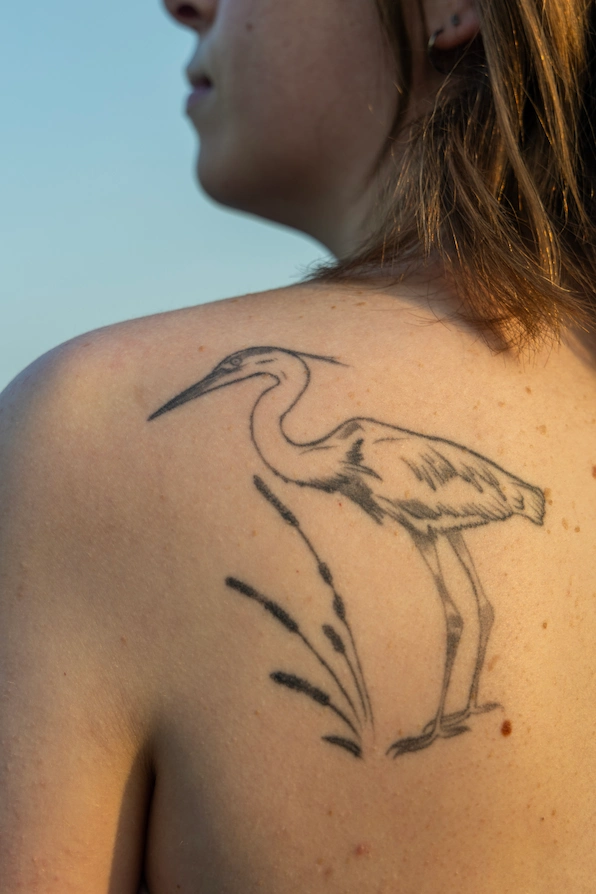
My degree is in biology. Right now I work in human medicine, as a pathology tech and, in addition to the Aquarium, I volunteer with PAWS and the Sno-King Marine Mammal Response team. I’m looking to enter a doctorate degree program to pursue research and medicine. I’d like to get into public health studies on animals and be able to relate that to human health.
I started volunteering at the Aquarium as a way to educate and connect with people, and to learn more myself. It makes me happy when I can help someone discover something. I like being able to show kids that it’s okay to touch the animals in the tide pools. If they’re scared, I say, ‘It’s okay, I’ll touch with you.’ It’s really cool to see people get inspired.
—Molly Biedscheid (she/her)
Tattoo by @a.ink.tattoo_lizzy
We thank Mia, James and Molly for sharing their stories with us—and all the volunteers who enhance every visit to the Aquarium. Interested in becoming a volunteer yourself? Learn more on our website!
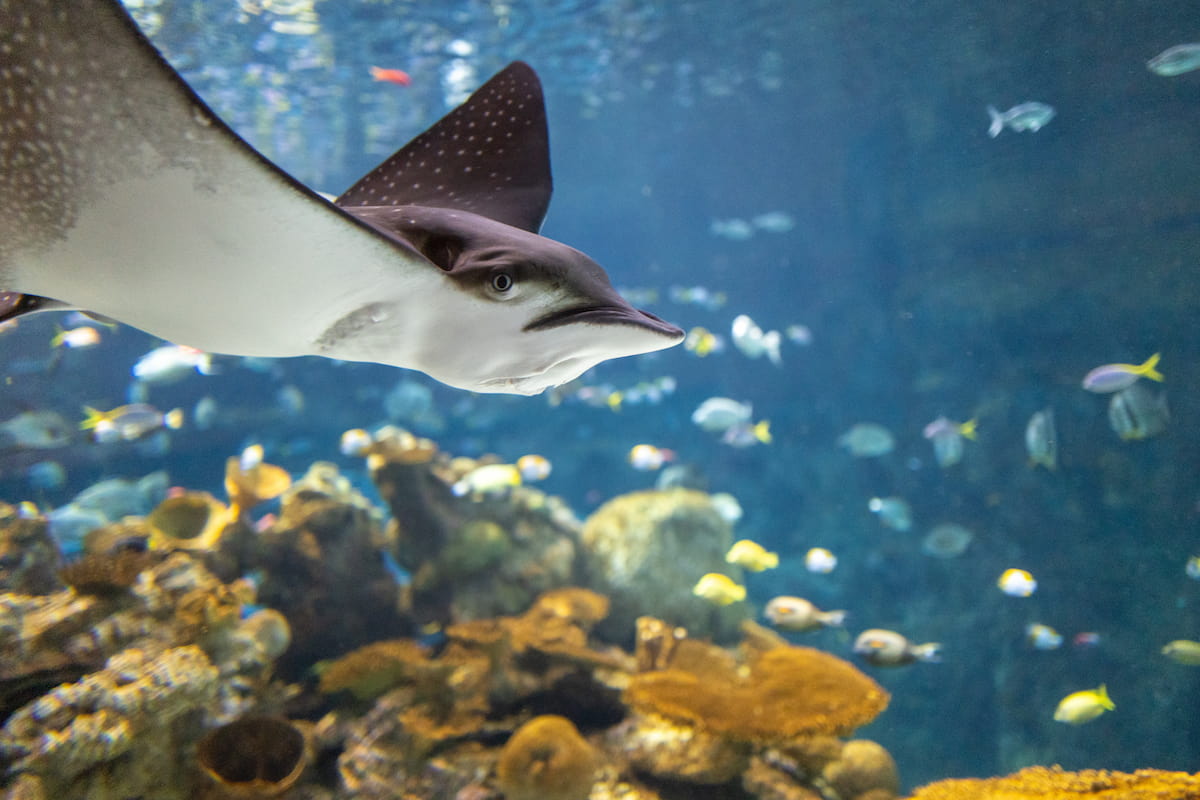
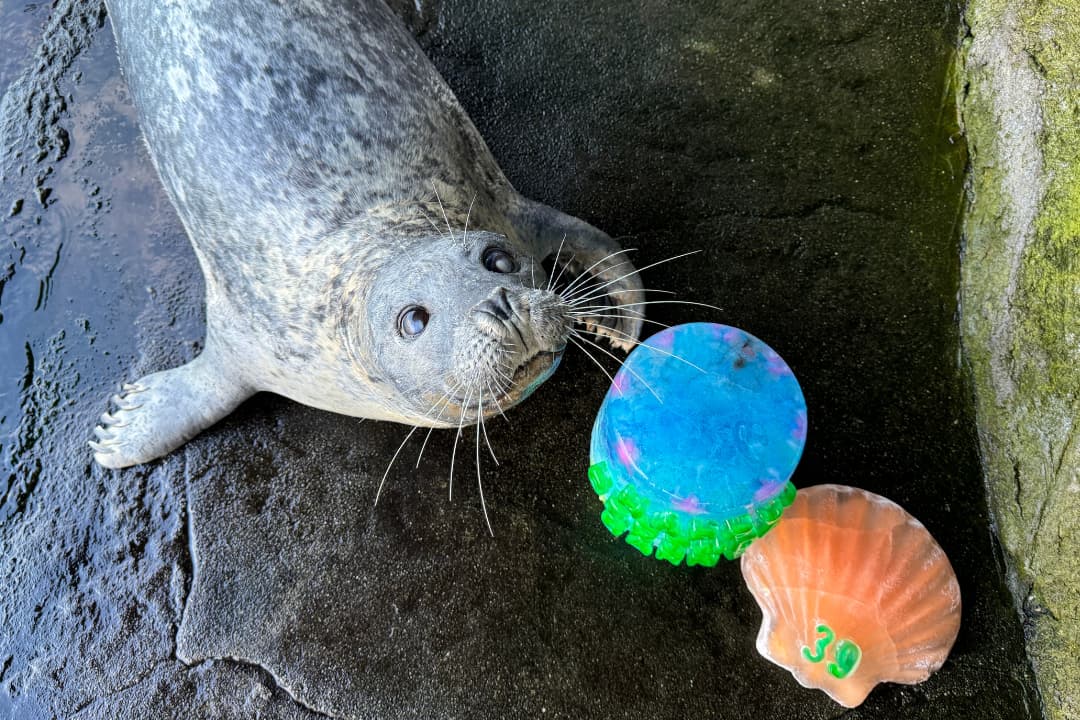
Editor’s note: This story was originally published in September 2024 for Barney’s 39th birthday, as he approached the human equivalent of 100 years old. Barney passed in March 2025. To celebrate his life and legacy, we’re republishing this story on what would have been his 40th birthday.
Barney the harbor seal was born right here at the Seattle Aquarium on September 14, 1985! And he’s been stealing the hearts of staff and guests alike ever since, while inspiring millions to help protect his beloved and charismatic species.
In his golden years, Barney enjoyed the simple things in life, like a nice nap in the sunshine, getting his teeth brushed daily and eating some of his favorite snacks, including all things fish. He was also a fan of his birthday celebrations, as you’ll see in the photos below. Dive down memory lane to revisit some of those celebrations with us as we commemorate Barney’s extraordinary life!
According to the Association of Zoos & Aquariums (AZA), of which we’re proud to be an accredited member, the median life expectancy for harbor seals in zoos and aquariums is about 25 years. At 39, Barney has lived well beyond that. In fact, his biological age is about the equivalent of a 100-year-old human!
Give him—and his caretakers—some love on our Facebook or Instagram to mark the occasion.
Barney’s 38th birthday bash was complete with a “cake” made from ice and 38 frozen fish!
We welcomed harbor seal Casey earlier in 2022, and all three “roomies”—Barney, Hogan and Casey— dug into a delicious, fish-filled ice treat together.
Barney rang in his 36th birthday by tucking into a towering ice treat “cake.”
While we couldn’t invite the public to celebrate with Barney because of our temporary, pandemic-related closure, our incredible animal care team made sure he felt the birthday love.
Animals at the Aquarium receive enrichment every day (read more about it on our webpage). Special occasions, like Barney’s 30th, give our animal care team a fun reason to get creative with it.
In 2013, Barney celebrated his birthday with cake in his habitat’s new haul-out space*! Generous support from people like you allowed us to renovate and expand the harbor seal habitat back then.
*What’s that? Space that the seals use to go onto dry land to nap, groom, cooperatively participate in their own health care and, in Barney’s case, eat a birthday treat.
Your gift today will make a difference too: Please consider a donation of $19.85, $39 or any amount on behalf of Barney’s birthday!
Shown here in the habitat’s previous haul-out space, Barney looks ready to devour the ice treat that our animal care team prepared for him.
What’s better on your 26th birthday than a delicious ice treat, just waiting for you to notice it as you casually swim by?
Here’s a throwback to Barney’s 25th! Our animal care team went all out with an ice treat complete with “candles” for him to crunch and munch.
Photo: Seattle Post-Intelligencer
How’s this for a sweet, vintage photo of newborn Barney alongside his mom, Clyde? For perspective on how long ago that was in terms of other Pacific Northwest icons, Barney was born the same year that downtown Seattle’s tallest skyscraper, Columbia Center, opened; two years before the band Nirvana was formed; and 15 years before the Kingdome was demolished. Just our humble opinion, of course, but we think he’s the best and most charming icon of the bunch. Happy, happy 39th to beloved Barney!
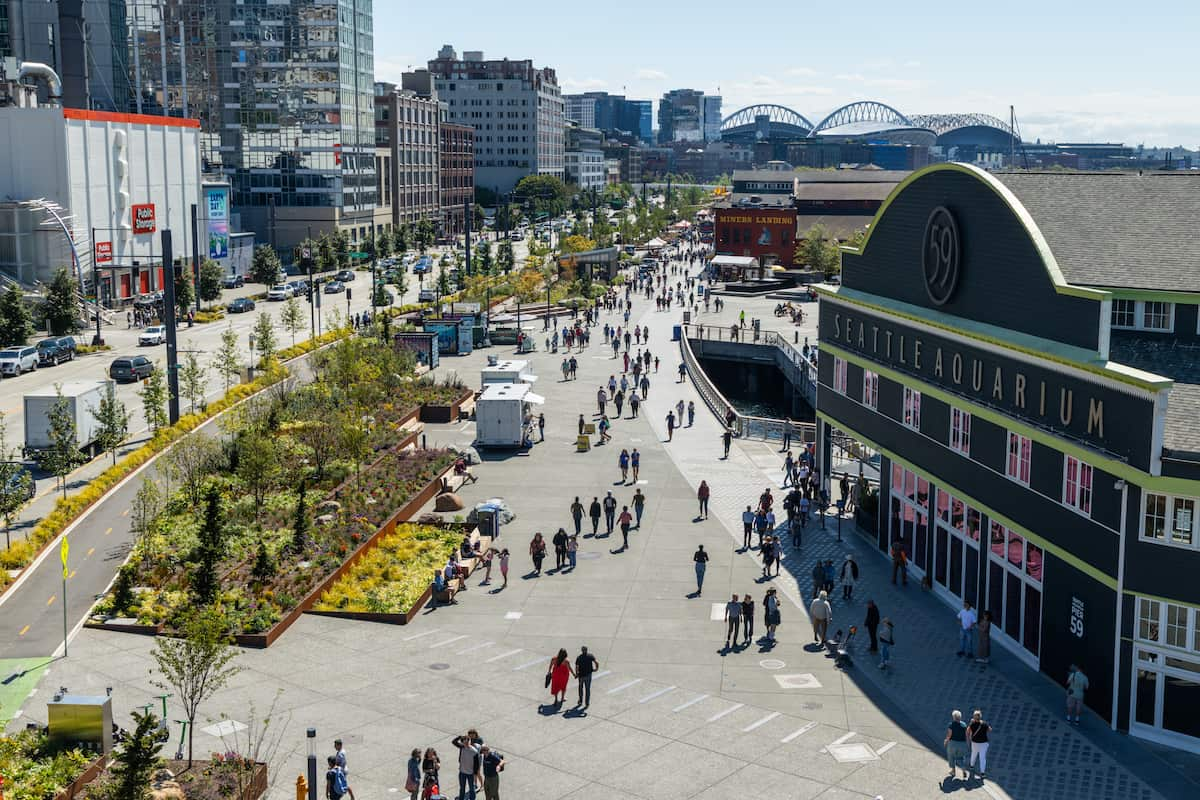
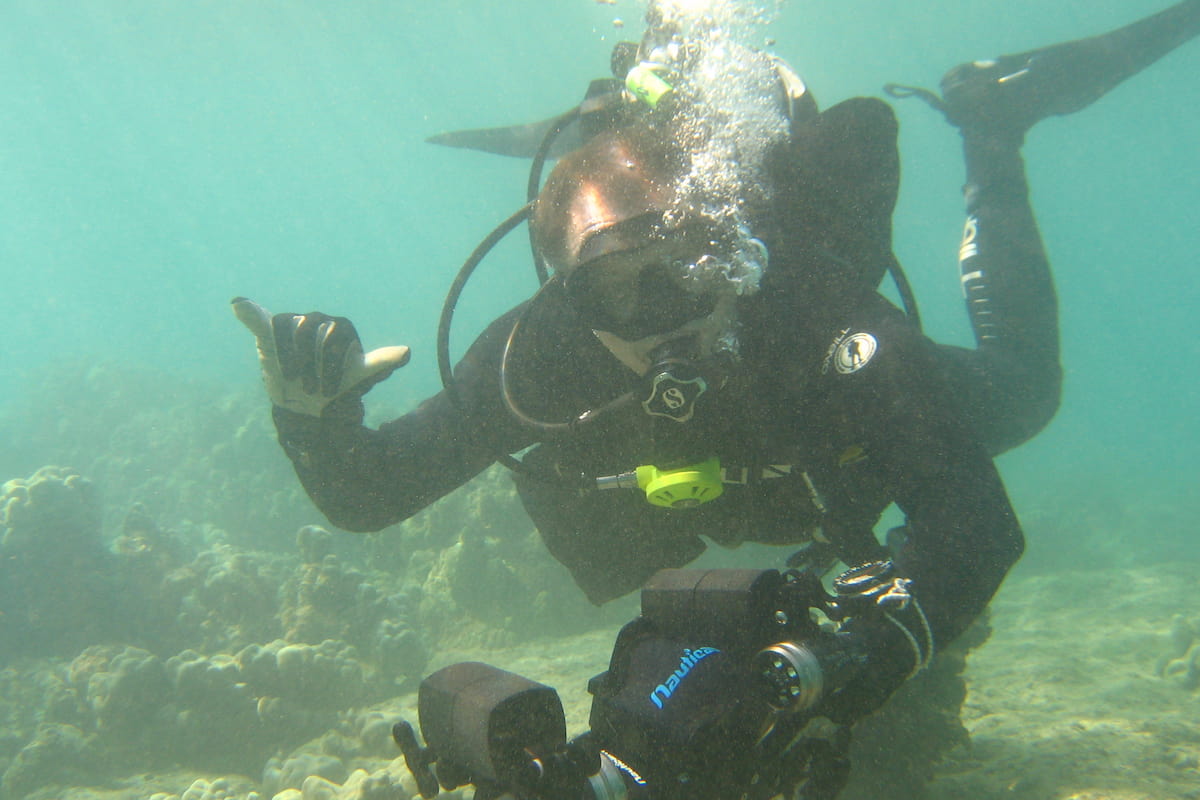
Editor’s note: We at the Seattle Aquarium were deeply saddened to learn of the recent passing of Jeff Christiansen—an extraordinary person, lifelong diving aficionado and valued staff member here at the Aquarium for nearly 40 years before his 2021 retirement. Jeff died on August 25 after experiencing a medical emergency underwater during a night dive.
To celebrate his life and honor some of his many contributions toward advancing our conservation mission, we’re resharing a web story we published as Jeff retired from his long career with us. Our hearts are with his grieving family, friends and diving community.
“You’re so lucky when you can make your passion your vocation,” says Jeff Christiansen, who retired on March 12, 2021 after a career at the Seattle Aquarium that began nearly 40 years ago. Jeff’s passion? Scuba diving. “It’s the closest you can get to another world without going into space,” he says.
Jeff’s love of diving started before he even entered elementary school in Aurora, Colorado. “I’ve been scuba crazy my whole life,” he laughs. “I learned to swim on the bottom of the pool when I was 4 years old. I grew up watching Sea Hunt and, for Halloween, I’d dress as a diver wearing a modified cat costume with oatmeal canisters on my back as oxygen tanks.”
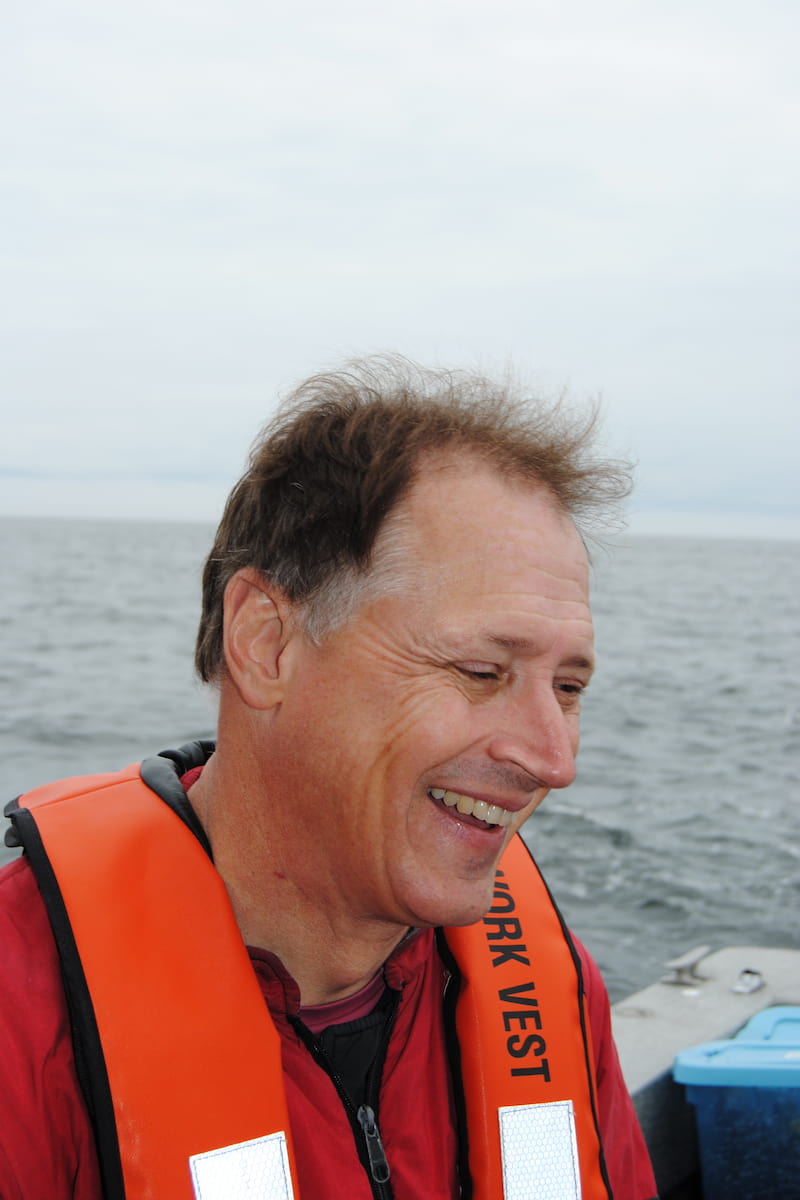
Jeff generously shared his knowledge and expertise with the Seattle Aquarium and diving communities.
When Jeff was 12, in 1968, his family moved to Seattle—and Jeff took his enthusiasm for diving to a whole new level. “My parents signed me up for scuba diving lessons, and I was certified as a junior scuba diver at age 12½,” he notes. “I helped start a scuba diving club at school. We lived on Three Tree Point near Burien, so I could walk down the block and into the water,” he adds.
As college approached, Jeff researched careers that could involve diving and landed on fisheries sciences. He became a Seattle Aquarium volunteer just a year after we opened, landing a slot in what was then called the Puget Sound Fishes exhibit in 1978. Two years later, he graduated from college and became a member of the Aquarium’s first pool of volunteer divers.
Jeff joined our staff in 1982, in a role called bio guard, which was, “half life sciences and half security,” he says. His shift ran from 7pm to 3am and, despite the challenging hours, “It was a lot of fun—a very diverse position and a great way to learn where everything was at the Aquarium and how it worked,” he comments. After stints as an exhibit technician and biologist (and transitioning to working at the Aquarium during the day instead of through the night), Jeff became our assistant dive safety officer in the mid-1980s and eventually took over as the lead dive safety officer—a position he held until his retirement.
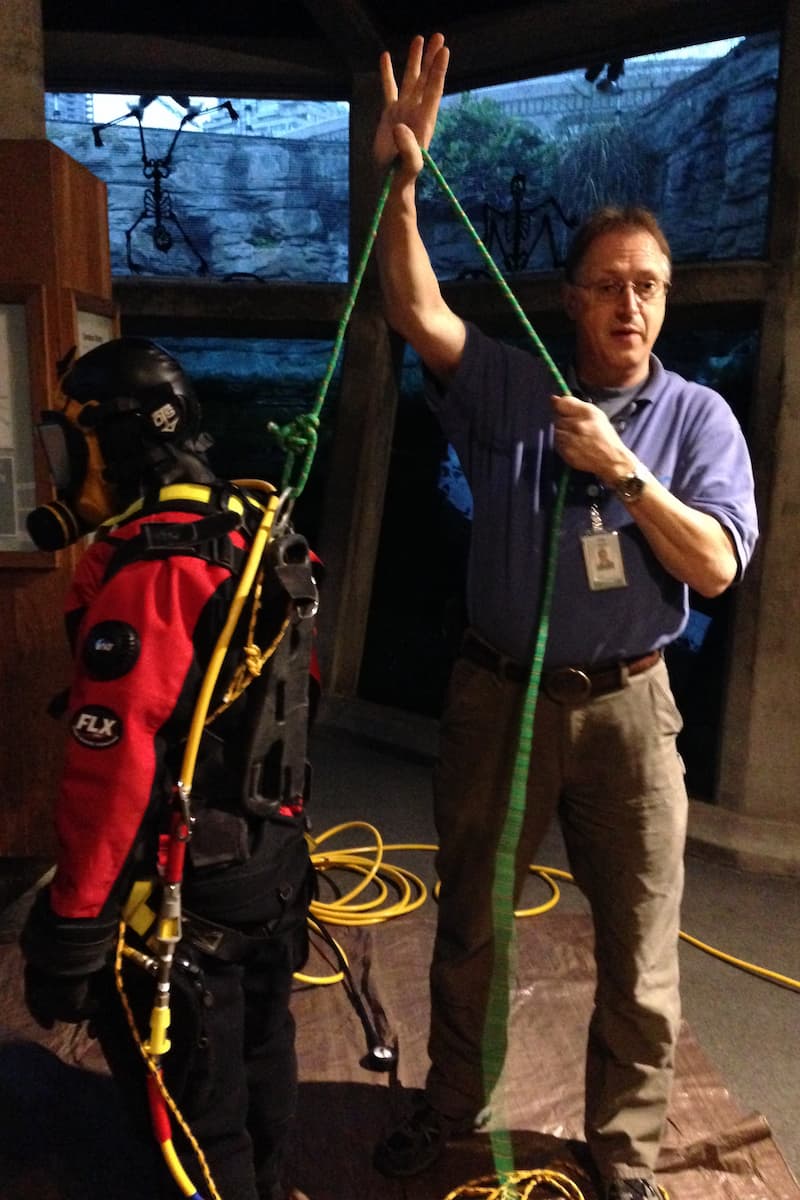
Jeff Christiansen leading a dive safety demonstration at the Seattle Aquarium.
Hearing Jeff describe highlights of his career at the Seattle Aquarium creates a quick understanding of why he describes it as “coming to fun.” He helped lead trips to Neah Bay, visiting sites that sit within Makah Tribe waters (we operate under a permit from the Tribe to enter their land/waters) and serving as the primary operator of the Aquarium’s boat. “Some of the sites we’re still visiting were found with a chart, compass and an old-school, flashing fishfinder,” he laughs. “It was a real test of our navigation skills.”
He was also closely involved in our sixgill shark research during the extraordinary era when these amazing animals were regularly spotted below the Aquarium’s pier. “Staying at the Aquarium late into the night, seeing a shark cruise by, and then having the opportunity to tag one underwater—those were some of the most exciting dives of my life,” he notes.

Jeff in his element, diving with underwater camera equipment.
The most fun of all? “It’s a tie between diving in the Underwater Dome and working in the Puget Sound Fish habitats before the Aquarium opens,” Jeff says decisively. “You put on the music of your choice, do your work as a professional fish janitor and get the privilege of seeing what happens as the fish wake up,” he smiles. “Watching fish for 10 minutes will solve most problems.”
The Seattle Aquarium has grown and changed in many ways since those very early days when Jeff joined us as a volunteer—with many more exciting changes yet to come. “The Aquarium has only gotten better and better over the years,” he says. “It’s truly a jewel on the waterfront, doing the important job of connecting what’s going on above the water with what’s happening below the surface.”
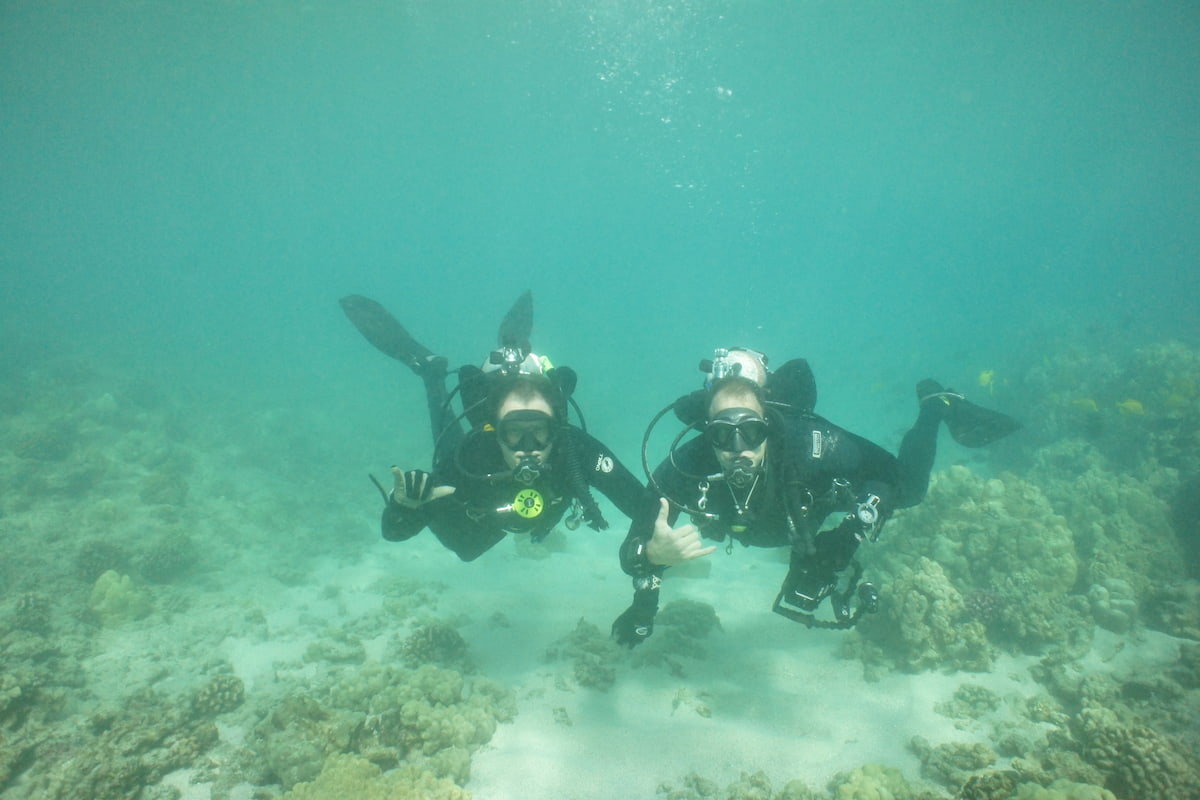
Jeff diving off of the Big Island of Hawai‘i with then-Associate Curator of Fish & Invertebrates/Assistant Dive Safety Officer Joel Hollander, who has since become our dive program manager.
He adds, “The Aquarium is so much more than just our physical footprint. Research, conservation education, community outreach, advocacy…it’s been great to see it going in those directions and I’m looking forward to seeing what the future holds.”
From the bottom of our hearts, we thank Jeff for his remarkable years of service to the Seattle Aquarium and our mission of Inspiring Conservation of Our Marine Environment. He will be greatly missed—and we wish him all the underwater adventure he could dream of in his well-deserved retirement.
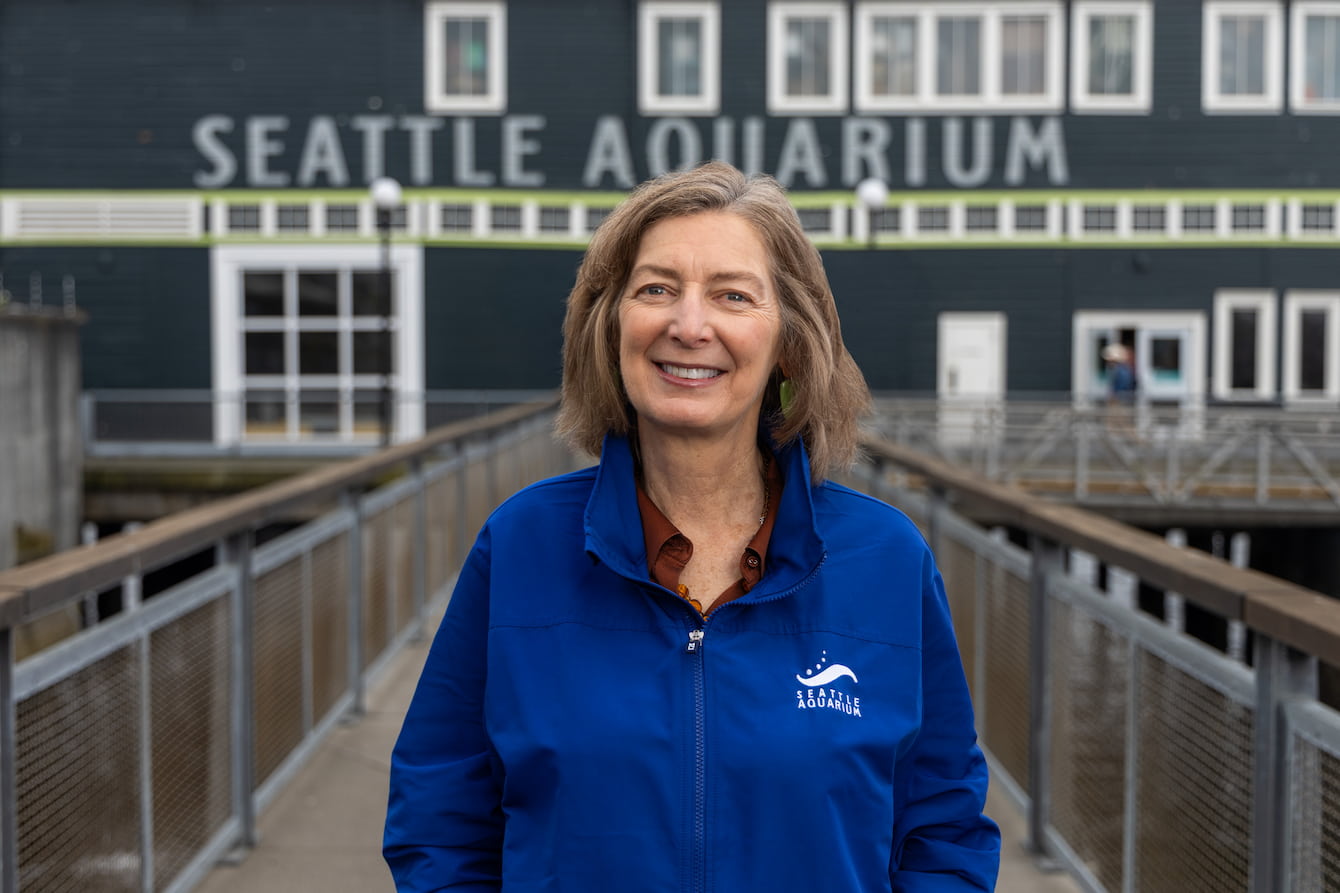
Gift shop buyer. Baby bald eagle caretaker. Nature adventure leader. International sailboat crewmember. Chief animal operations officer. Education curator. President & CEO.
What do these roles have in common?
Peggy Sloan, who joined us as our new president & CEO in May, has held each of them—and others!—over the course of her storied career. She recently sat down to talk about the road that brought her here, what she’s learned along the way and her vision for the Seattle Aquarium and our conservation mission. (Missed the announcement about her arrival? Check out our press release.)

Seattle Aquarium President & CEO Peggy Sloan.
Q: What experiences did you have as a young person that created a sense of connection to the natural world and ocean?
A: I think my curiosity about nature and animals was innate. I grew up in an urban-suburban environment with pockets of wildlife—wherever there were animals and trees, I was out in it.
Q: Did you grow up thinking that you were going to do something with animals?
A: I had no idea except that I wanted to be happy. And what made me happy was being in nature and helping animals.
Q: What drew you to a career in marine conservation?
A: That’s a long story with a lot of twists and turns along the way! But where it started was pursuing environmental science in college, because that was the major with the most field courses and time outside.
I took classes in marine science. I was also working and had many different jobs, including one with an organization called Project U.S.E., where we brought urban youth into the outdoors for transformative experiences through nature and community.
My first job after graduation was like my little-kid dream: raising and releasing bald eagles for the endangered non-game species program in New Jersey. After my first season, they offered me a permanent job. At the same time, Project U.S.E. offered me a job leading a new coastal canoeing program. That’s the one I took. It was a very conscious choice that we have to work with people to protect nature.
After two years, I recognized that what I was doing was working for people in nature, not working for nature—and that I had a different calling. Because I didn’t need housing during my time with Project U.S.E., I’d been able to save some money. I took what I had, which was a bicycle and camping gear, and bought a ticket to New Zealand for a few months to see some of the world and figure out what was next.
On the last leg of the trip, I got stuck in a rainstorm and pulled over in a little port town where circumnavigating sailboats were looking for crew. I’d never sailed before but I’d always wanted to. I thought I’d extend my travel by a few weeks and instead sailed for the next 18 months, ending back in the U.S.
“That was what solidified marine conservation for me: How small the planet is. How much of it is covered by water. How vulnerable the ocean is, even though it seems so vast.”
At the end of it all, when I got back to the U.S., I knew I had to work for the ocean. But what that looked like, I didn’t yet know.
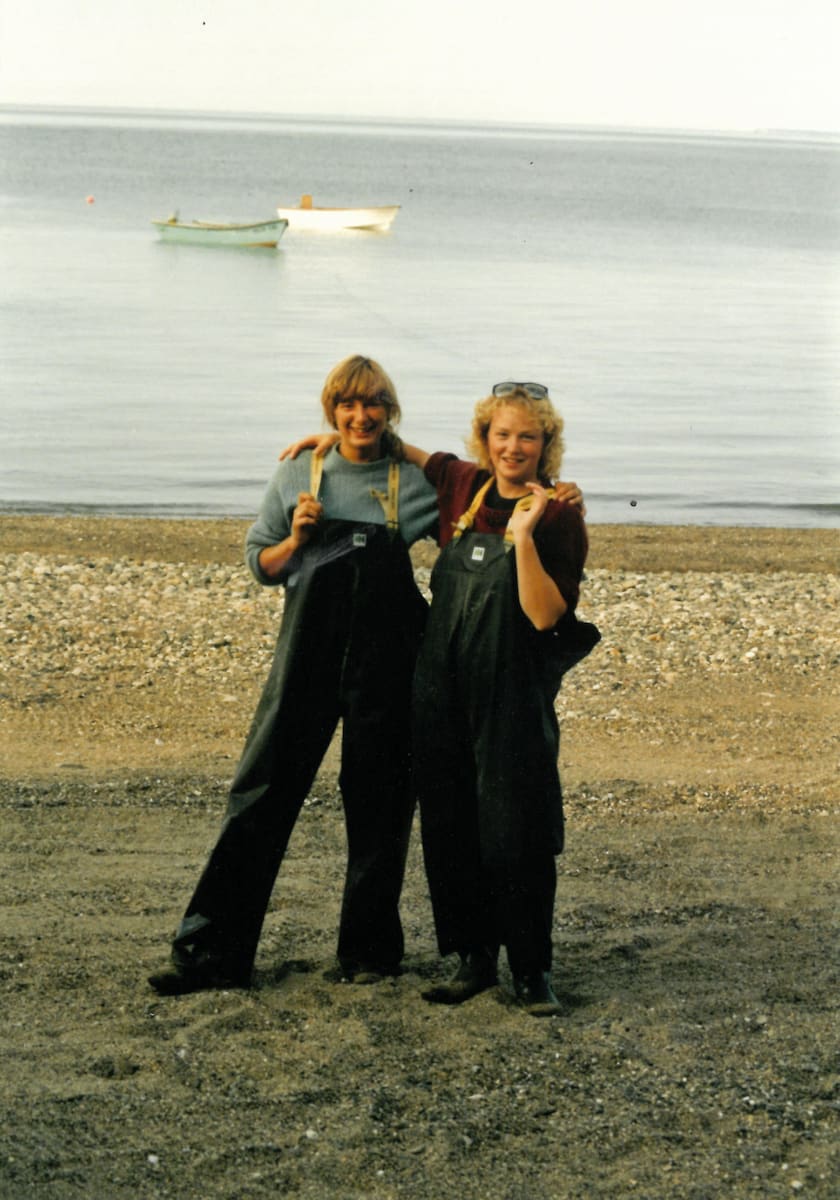
Working and living in the Pacific Northwest helped Peggy fall in love with our unique region. Photo: Susan Sommer (nee Beeman).
Q: What a story! What happened next?
A: I got a job here in Seattle working in the Bering Sea as a scientific observer for commercial fisheries. I fell in love with the Pacific Northwest and decided to pursue research and education for the ocean.
I thought, “I will run a boat, I will do research and education, and I will do it in the Pacific Northwest because I love it here.”
I had a job lined up to operate a boat for three months in the Florida Keys and went there to get my captain’s license. I got it—and in the process found a calling where it wasn’t required. I started working in a marina and, on my days off, volunteered at a place called the Dolphin Research Center (DRC).
“And that's where the switch turned on. I saw the intersection between what I wanted people to care about and what they did care about. They came through the door just wanting to see dolphins and were absolutely transformed in their receptivity to connecting with and caring about nature.”
Q: And we’re only in 1993! What happened over the next 30+ years?
A: I took the first job available at DRC, which was the gift shop buyer, and ended up leaving as director of education. A lot happened in the interim! But throughout my time there, I recognized what I really wanted to know about was, “How are we activating people in the conservation space?”
After eight years with DRC, I started graduate school and took a job as the education curator at Brevard Zoo in Florida. This position introduced me to the broader community of the Association of Zoos and Aquariums (AZA) and the possibility to amplify conservation impact through broad collaboration. However, after two years, I knew my focus needed to be marine. I had the opportunity to go to North Carolina Aquarium at Fort Fisher as their education curator, which I did for seven years and then became the aquarium director for another nine. I also finished my graduate degree in marine biology at UNC-Wilmington.
In 2018, I welcomed the opportunity to join the John G. Shedd Aquarium in Chicago during a time of major transformation. I wanted to understand how to reach people in urban settings—where most humans live—and Shedd created an ambitious plan to do so.
I’d probably still be there if it weren’t for the opportunity here. As much as I loved the work and will always love the Shedd Aquarium, I missed the ocean.
Q: What drew you to the president & CEO role at the Seattle Aquarium?
A: The sense of place, the potential for impact, the ethos and the talent.
Throughout my career, once I became connected with the AZA community, the Seattle Aquarium was very much in my sphere of work partners. This aquarium has always punched above its class—the culture and community here are really effective and innovative. And when I’m in conversation with the board, it’s clear that the most important thing to them is delivering on the conservation mission. We also have two new buildings, the off-site Animal Care Center and the Ocean Pavilion—and a whole new waterfront of opportunity.
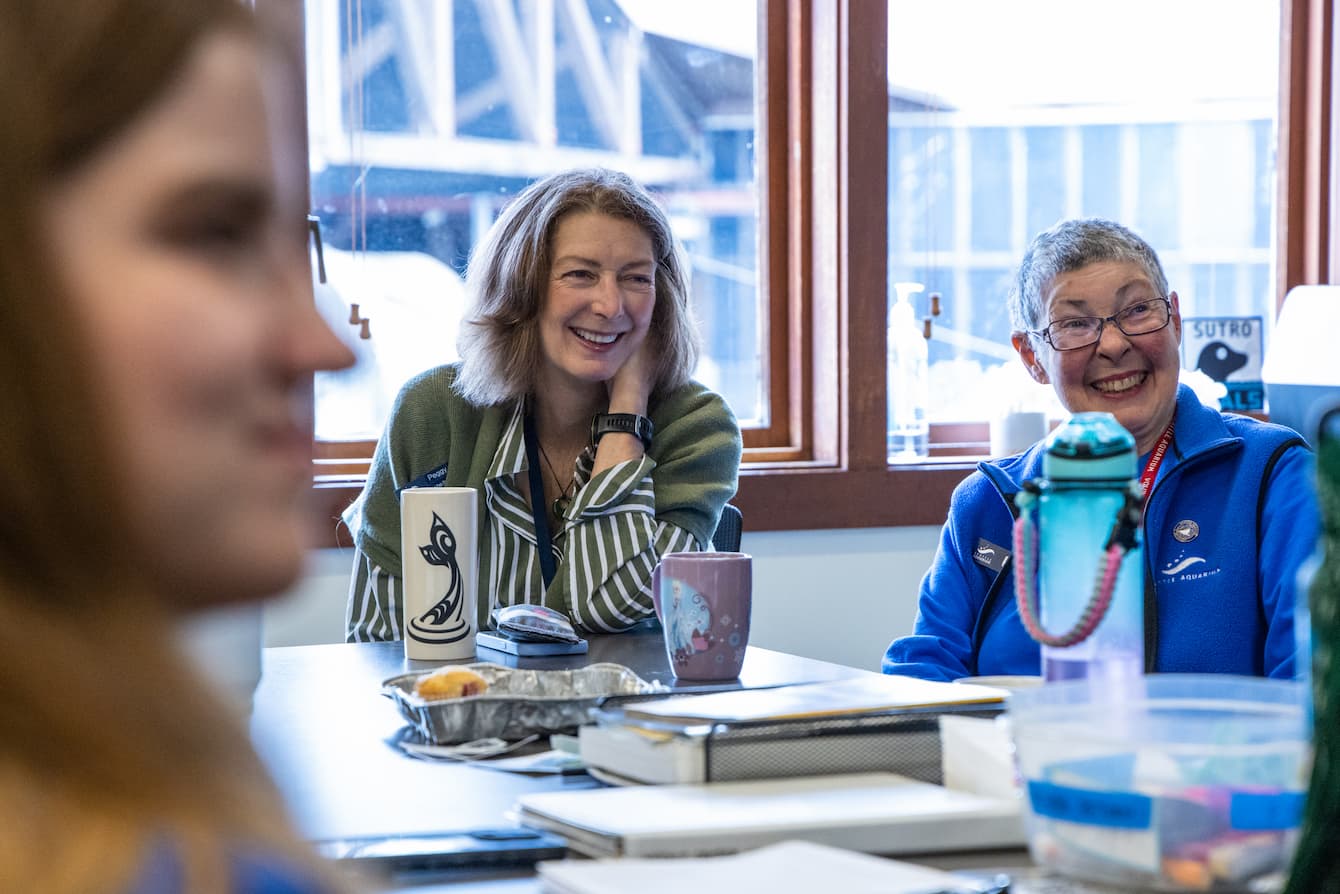
Peggy meeting with a group of Seattle Aquarium volunteers.
Q: What initiatives would you like to move forward during your time here?
A: I want us to be operationally stable, meaning that people want to work here, and stay, because we are effectively delivering on our mission and they’re excited about what’s next: deepening our impact. I want us to lean in to what we’re good at and combine our strengths in such a way that we are moving the needle on marine conservation with a highly engaged, talented and valued team.
Q: What does deepening impact look like to you?
A: Deepening impact means that the changes we’re working to achieve come to fruition: more critical marine areas are protected, effectively—creating nature solutions to global environmental threats, like warming seas, while simultaneously leading to more species recovery—because more people, all people, value nature—because we need it to live on a habitable planet.
Q: Last big question: Why are aquariums important?
A: The Seattle Aquarium is a conservation organization and we’re preaching to the congregation more than the choir. For example, The Nature Conservancy, World Wildlife Fund, Conservation International and other great and well-established conservation organizations would love to have our platform. The people that are engaged with those organizations—who are doing tremendous work—are already in the choir. They’ve joined up because they already value nature.
Our audiences are not necessarily there. We have this incredible opportunity to reach people where they are. That’s why we call aquariums free-choice learning environments, right? People may choose to come here because their kids want to see sharks or otters or an octopus. Or they may simply want something to do on a rainy day. And that gives us a chance to reach them.
Aquariums are one of most accessible and best ways that we have of introducing people and getting them connected to the ocean in a meaningful way. That’s why some of the most important roles in the Aquarium are probably the front-line greeters who encourage people to go to the touch pools or the harbor seal habitat—“You’ve gotta see XYZ!” They feel important, seen and heard. They have fun, and want to come back and want their friends to come too. And they want sea otters to be happy for the rest of their lives.
Q: Last question for real: What’s your favorite invertebrate and why?
A: That’s one I can’t answer because it’s whichever one is in front of me—the one that I’m getting to see and experience. I saw two opalescent nudibranchs in the touch pools this morning. The fact that they just come in with the water from Elliott Bay, just below our pier—it’s absolutely magic and our guests think so too. From moments like that, it’s a quick jump to, “Oh my gosh, we have to save the ocean.”
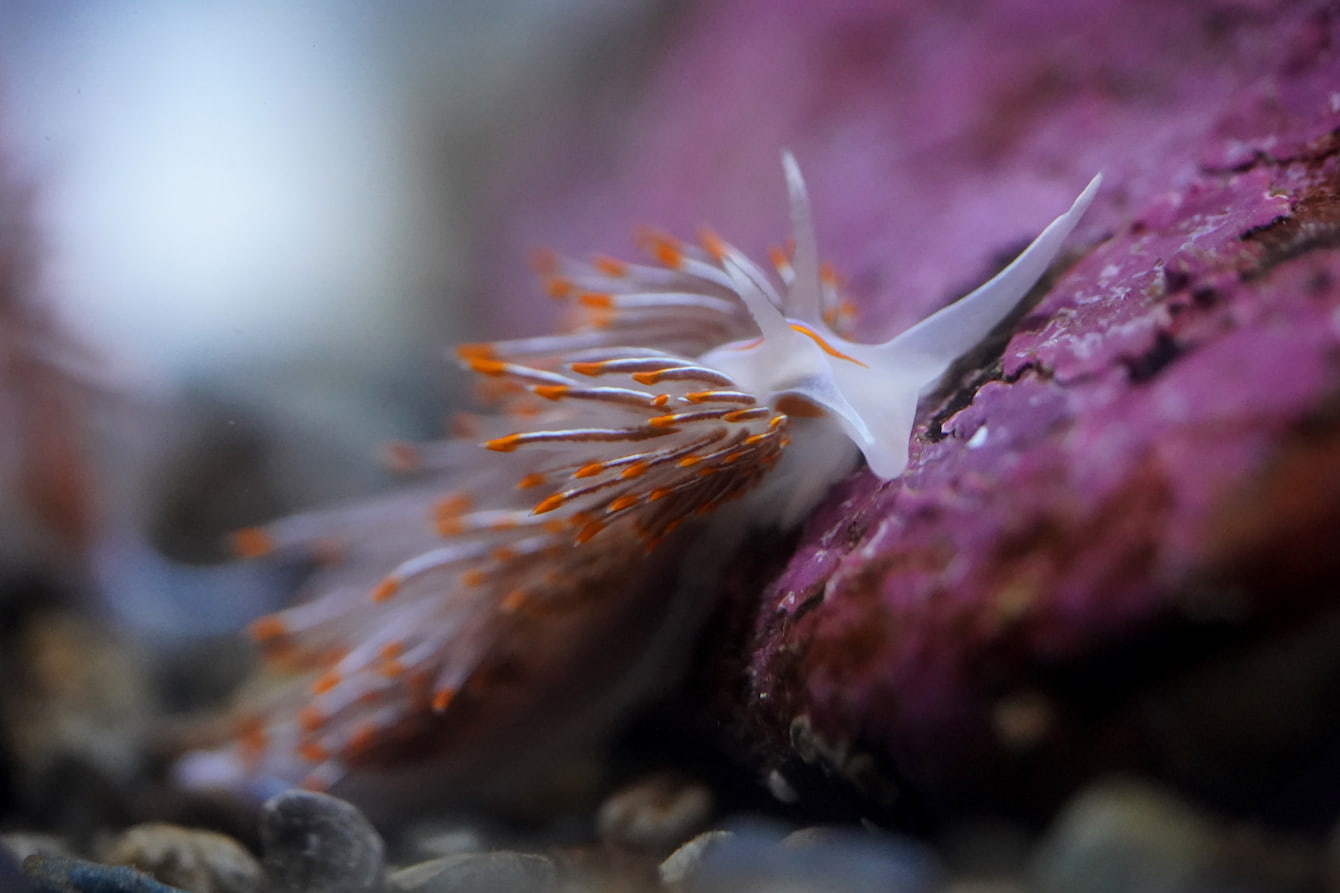
Can you spot an opalescent nudibranch on your next visit to the Aquarium?
Ready to learn more about what you can do to help protect the one world ocean we all depend on? Visit our Act for the Ocean webpage and plan your next visit to the Seattle Aquarium! You might even spot Peggy admiring the nudibranchs at the touch pools.
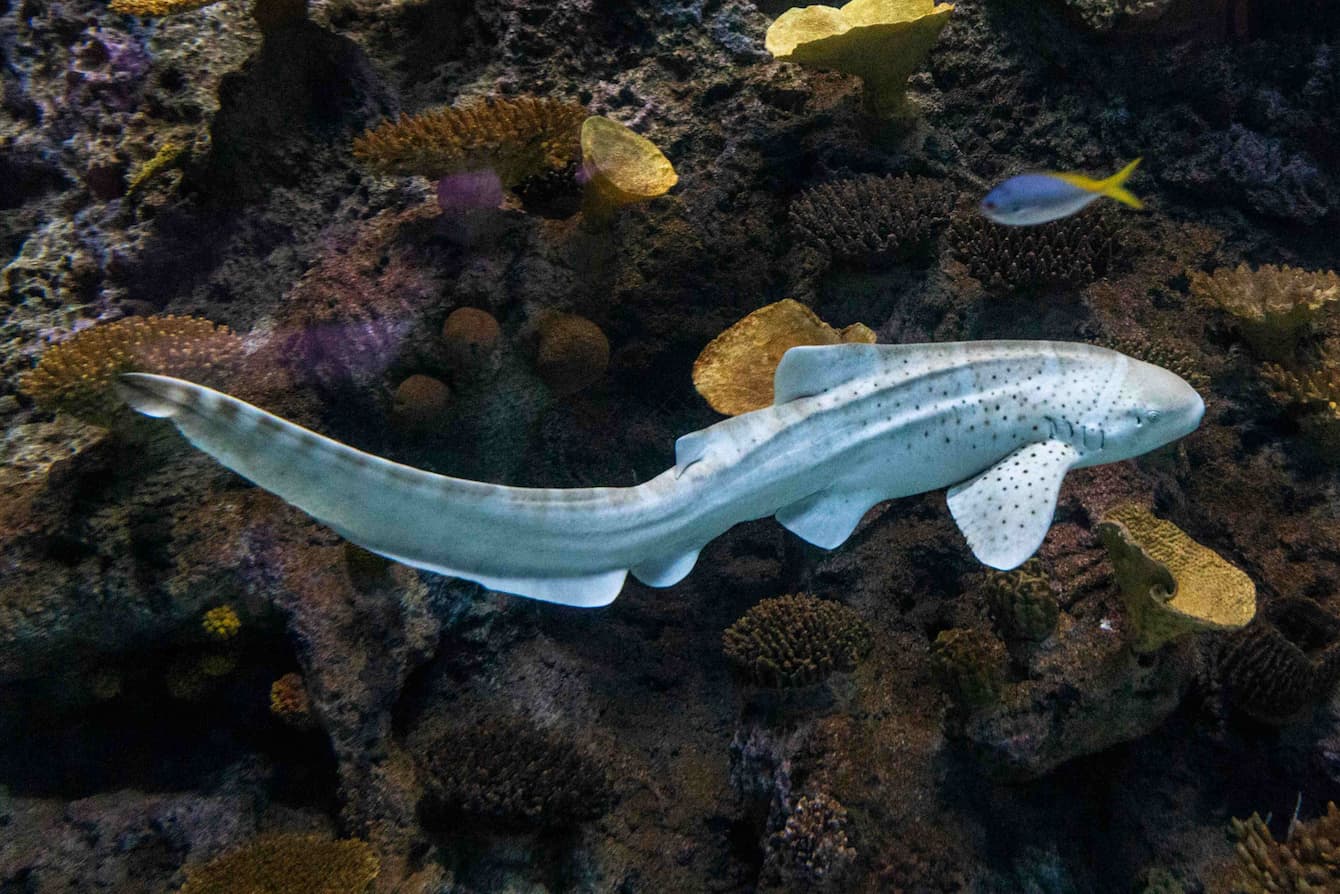

Summer is here! And you’ve still got time to meet Seattle Aquarium beach naturalists on local shorelines to discover the amazing animals that live in the intertidal zone, aka where the water meets the land between high and low tide. (Check the schedule here!)
Nudibranchs are among the many fascinating creatures you may encounter on the beach at low tide. You can also get to know some nudibranch species in a number of habitats at the Seattle Aquarium.
But wait! Are you wondering, “What’s a nudibranch?” It’s a fair question. You may also be thinking, “How do I pronounce that word?” We can help with that too!
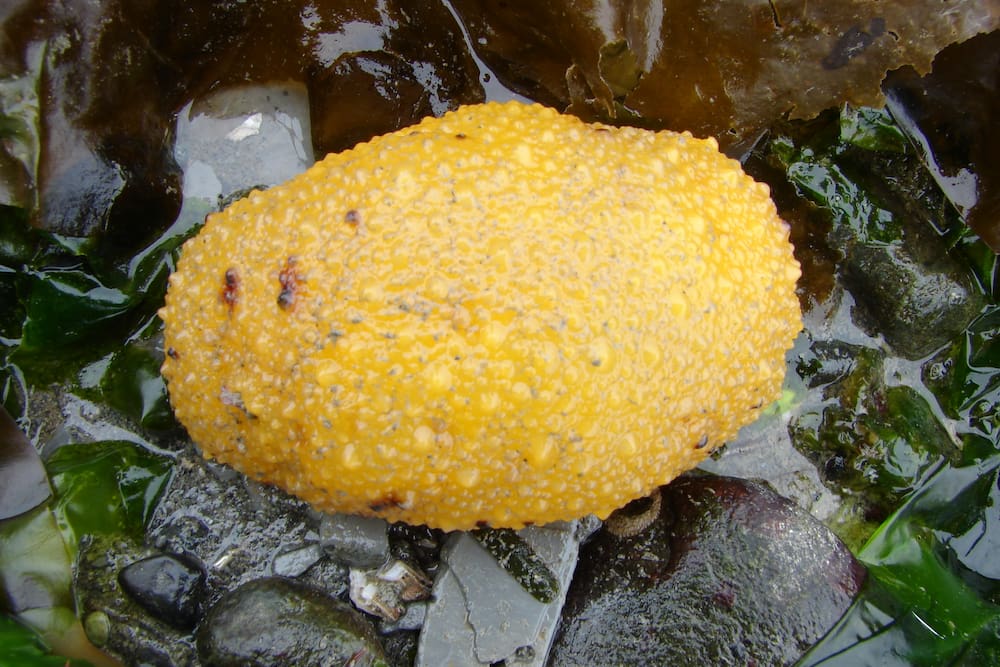
Is that a lemon nestled into the kelp? Almost! It’s a species of nudibranch called a sea lemon. It’s among the nudibranchs you can see and learn about at the Aquarium—and you may be able to spot one on a local beach at low tide as well.
First things first: Nudibranchs are members of the sea slug family. They’re mollusks, related to bivalves (meaning animals with two shells) like clams, mussels and oysters, as well as single-shelled animals like chitons.
But unlike those cousins, nudibranchs don’t have shells.* So you could technically think of them as naked sea slugs. After all, their name does start with the word “nude” (minus the “e”)!
All kidding aside, the name nudibranch means “naked gills.” It refers to the external gills or feathery-looking appendages that many nudibranch species display on their backs.
And how do you say their name? NEW-de-brank (with the same “a” sound as “tank”). If you’re admiring more than one of these fascinating creatures, it’s NEW-de-branks (never NEW-de-branches!).
*Well, the adults don’t. Larval nudibranchs have shells but shed them as they mature.

You can also get to know the opalescent nudibranch when you visit the Seattle Aquarium.
Scientists estimate there are over 3,000 nudibranch species. They’re found worldwide—in cooler, temperate waters like those in Puget Sound, tropical waters like the Coral Triangle and even the frigid waters of the Arctic and Antarctica. They live at depths ranging from the intertidal zone to over 2,000 feet below the surface. And they come in incredible variety of shapes, colors and sizes, from a fraction of an inch to about the size of a football.
That’s a lot of differences! But the majority of nudibranch species share some common characteristics—in addition to the soft bodies, lack of shells and external gills that inspired their common name, that is.
For one, most nudibranchs have a pair of sensory tentacles on their heads, called rhinophores, that help them detect chemicals in the waters (similar to how your nose helps you detect odors in the air). They’re carnivores, preying on animals including sponges, barnacles, anemones—even other nudibranchs! And they have both male and female reproductive organs.
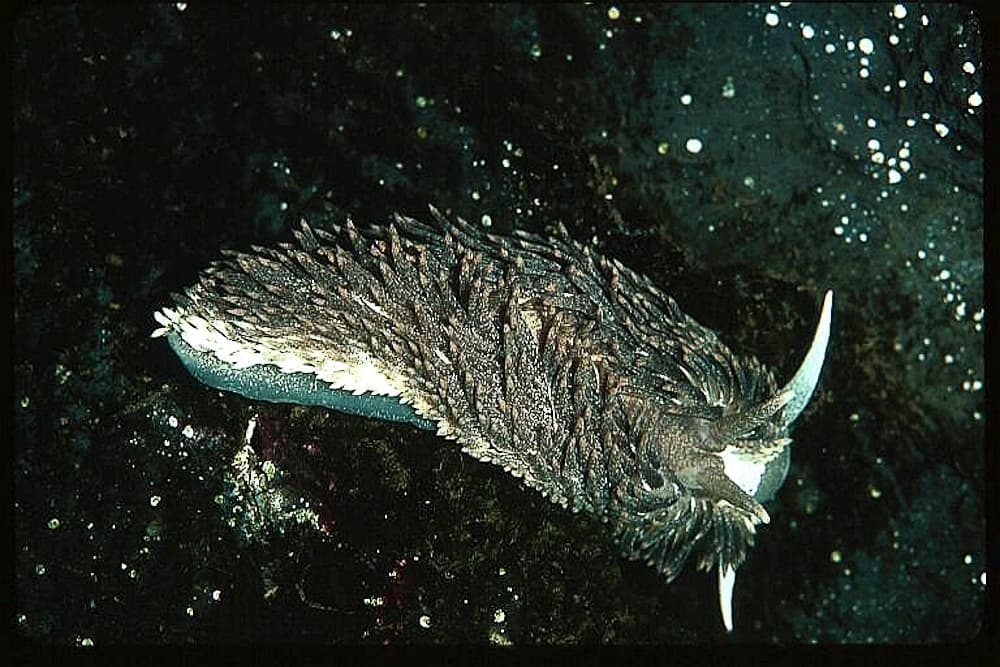
It’s easy to see why the common name for this nudibranch species is “shaggy mouse!”
There’s much more to learn and love about nudibranchs, and the Seattle Aquarium is a great place to start. You can chat with our volunteer naturalists on the beach this summer or visit the Aquarium to strike up a conservation with one of our knowledgeable interpreters—just look for the folks in blue shirts!
And, no matter how far away you are from the ocean, you can make a difference for the animals that live there, including nudibranchs. A few ideas: Contact your legislators to urge support for legislation that protects ocean health. Use public transportation, fly less and limit your use of single-use plastics. Looking for other ideas? Volunteer naturalists on the beach and interpreters at the Aquarium are a great source for those too! You can also check out our act for the ocean webpage.